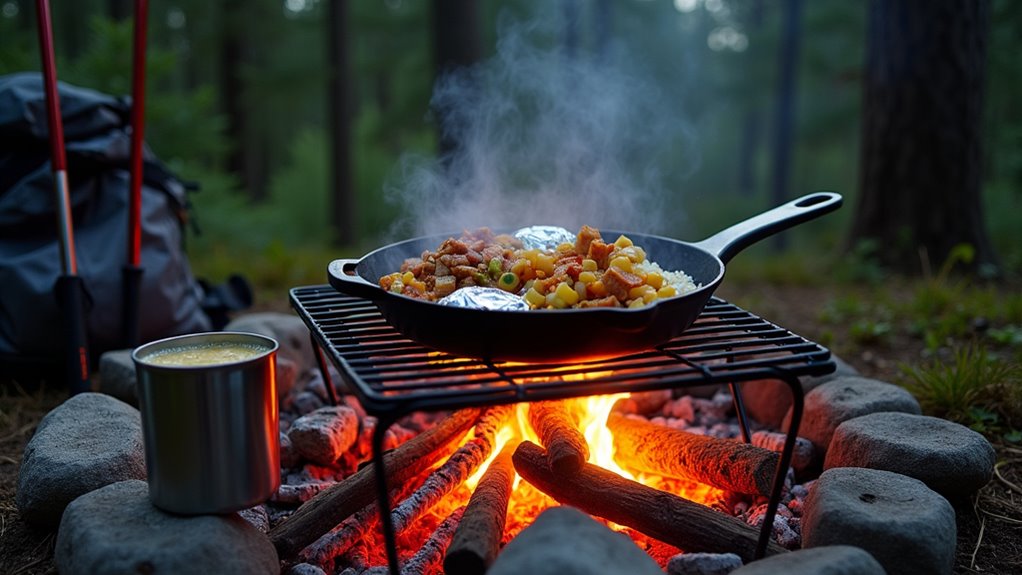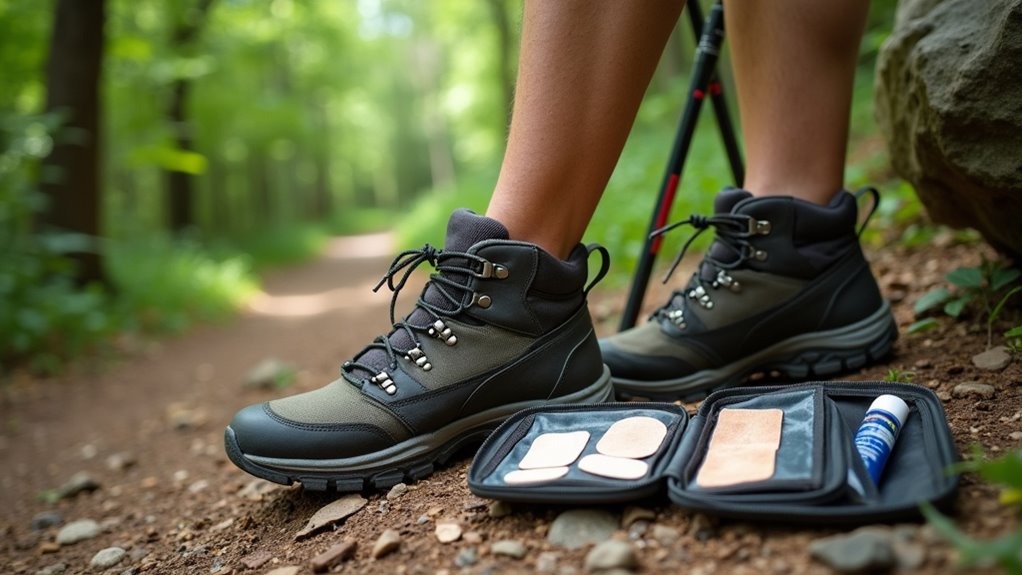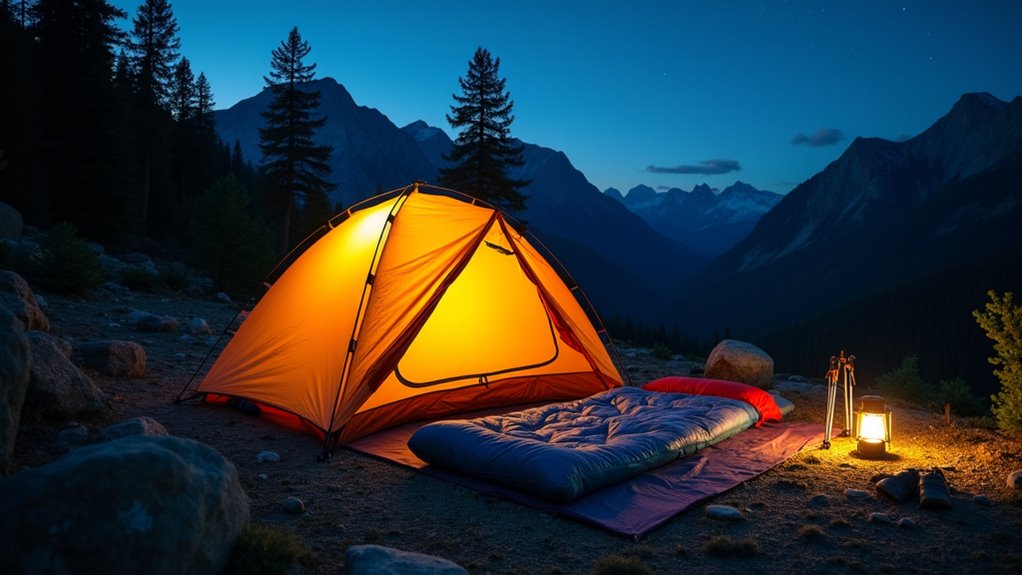To prepare for high altitude on your next backpacking trip, start hydration 2–3 days before ascent by increasing water intake, using electrolytes, and avoiding alcohol. Train with aerobic, HIIT, and strength sessions—especially for your legs and core—and consider using elevation masks. Boost calorie and carbohydrate intake, focusing on iron-rich foods, and bring high-calorie snacks. Arrive at moderate elevation several days early to acclimatize, and limit sleeping elevation gains. If you continue, deeper strategies and safety tips await.
When you’re planning to venture into high-altitude environments, such as mountain ranges above 8,000 feet, it’s essential to prepare thoroughly to minimize health risks and maximize performance. Start your preparation several days before your trip by increasing hydration—aim to drink 32-48 ounces of additional water daily, beginning 2-3 days prior to ascent, as your body loses more moisture through respiration at higher elevations.
Monitor your urine color, targeting pale yellow, to guarantee adequate hydration, and avoid alcohol, which can worsen dehydration and impair acclimatization. Supplement your fluids with electrolytes to counteract losses from increased urination and sweating, and sip water frequently rather than consuming large amounts at once.
Physical conditioning is critical. Focus on aerobic training that enhances VO₂ max through activities like running, cycling, and swimming. Incorporate high-intensity interval training (HIIT) to simulate the demands of steep climbs, and train with weighted packs to strengthen stabilizing muscles needed for backpacking. Building aerobic capacity is especially important, as it helps your body use oxygen more efficiently at altitude, reducing the likelihood of exhaustion and improving your comfort during long treks. Even at home, you can simulate altitude conditions through elevation masks during workouts to help your respiratory system adapt to reduced oxygen levels.
Prioritize lower-body strength, especially in your quads and glutes, to support sustained uphill movement. If available, use altitude-simulation masks, though their effectiveness can vary. Practice rhythmic breathing techniques to improve oxygen intake and respiratory efficiency during exertion.
Nutrition requires careful planning. Increase your caloric intake by 20–30% before and during your trip to meet higher metabolic demands. Emphasize carbohydrate-rich foods for rapid energy in low-oxygen conditions, and pack high-calorie, appealing snacks to counteract altitude-induced appetite loss.
Consume iron-rich foods pre-trip to enhance your body’s ability to transport oxygen, but avoid excessive salt to reduce dehydration risk.
Arriving early for acclimatization is one of the most effective ways to reduce your risk of altitude sickness and give your body time to adapt to lower oxygen levels. Arrive at moderate altitude (8,000–9,000 feet) 3–5 days before your hike to allow your body time to adjust. Limit your daily sleeping elevation increases to 1,000 feet once above 10,000 feet, and use the “climb high, sleep low” method when feasible.
Recognize early altitude sickness symptoms and descend immediately if severe signs occur. Protect yourself from environmental hazards with SPF 30+ sunscreen, UV-blocking sunglasses, layered clothing, and regular weather monitoring to guarantee safety throughout your high-altitude adventure.









